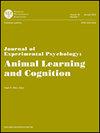迁徙的博贡飞蛾靠星星导航。
IF 0.9
4区 心理学
Q4 BEHAVIORAL SCIENCES
Journal of Experimental Psychology-Animal Learning and Cognition
Pub Date : 2025-09-22
DOI:10.1037/xan0000406
引用次数: 0
摘要
对David Dreyer等人的文章的评论(见记录2026-44878-014)。Dreyer等人扩展了Bogong蛾部署的感官工具箱,将夜空中的天体线索包括恒星在内。在博贡飞蛾身上发现恒星指南针是非同寻常的,因为这种能力似乎需要比人们直觉上认为昆虫所能具备的更敏锐的视觉。事实上,在此之前,只有鸟类和人类具有高度敏锐的视觉系统,能够令人信服地利用星星作为指南针来选择和保持运动方向。Dreyer等人采用了一种巧妙的方法,将测试设备、飞行模拟器和行为分析结合在一起,使用了数百只圈养的、系住的Bogong飞蛾,首先调查了它们将系住的飞行定向到季节适宜的方向的能力。继恒星指南针的行为感觉演示之后,该研究值得称赞地转向了对潜在神经实现的第一次评估,通过记录三个已知在其他昆虫中编码空间有意义信息的大脑区域的神经元的空间调谐和响应特性:视叶、中央复体和侧副叶。然而,神经记录工作中有几个因素不太令人满意,作者有理由承认,报告的数据只是一个更彻底的后续研究的起点。在目前的研究中没有解决的一个重要问题是距离是如何在博公蛾的导航系统中编码的。尽管引导博贡飞蛾迁徙的恒星指南针可能令人印象深刻,但需要承认的是,就像地磁指南针一样,这两种定向机制似乎都是通过基因工程进入神经系统的,无法通过学习来改变。可以肯定的是,在讨论动物如何在全球空间中航行这一广泛问题时,博公蛾将继续是一个重要的模式物种。(PsycInfo Database Record (c) 2025 APA,版权所有)。本文章由计算机程序翻译,如有差异,请以英文原文为准。
Migrating Bogong moths navigate by the stars.
Bogong moths (Agrotis infusa) can rely on the stars of the night sky to orient their migrations of distances up to 1,000 km. This navigational mechanism is likely supported by a suite of directionally tuned neurons distributed in the optic lobe, central complex, and lateral accessory lobes of the Bogong brain. (PsycInfo Database Record (c) 2025 APA, all rights reserved).
求助全文
通过发布文献求助,成功后即可免费获取论文全文。
去求助
来源期刊

Journal of Experimental Psychology-Animal Learning and Cognition
Psychology-Experimental and Cognitive Psychology
CiteScore
2.90
自引率
23.10%
发文量
39
期刊介绍:
The Journal of Experimental Psychology: Animal Learning and Cognition publishes experimental and theoretical studies concerning all aspects of animal behavior processes.
 求助内容:
求助内容: 应助结果提醒方式:
应助结果提醒方式:


